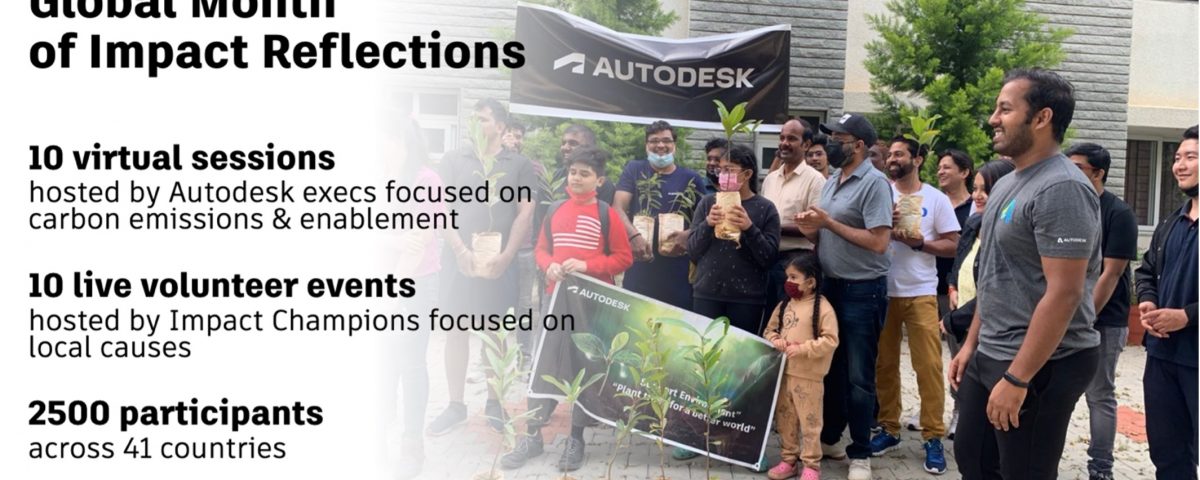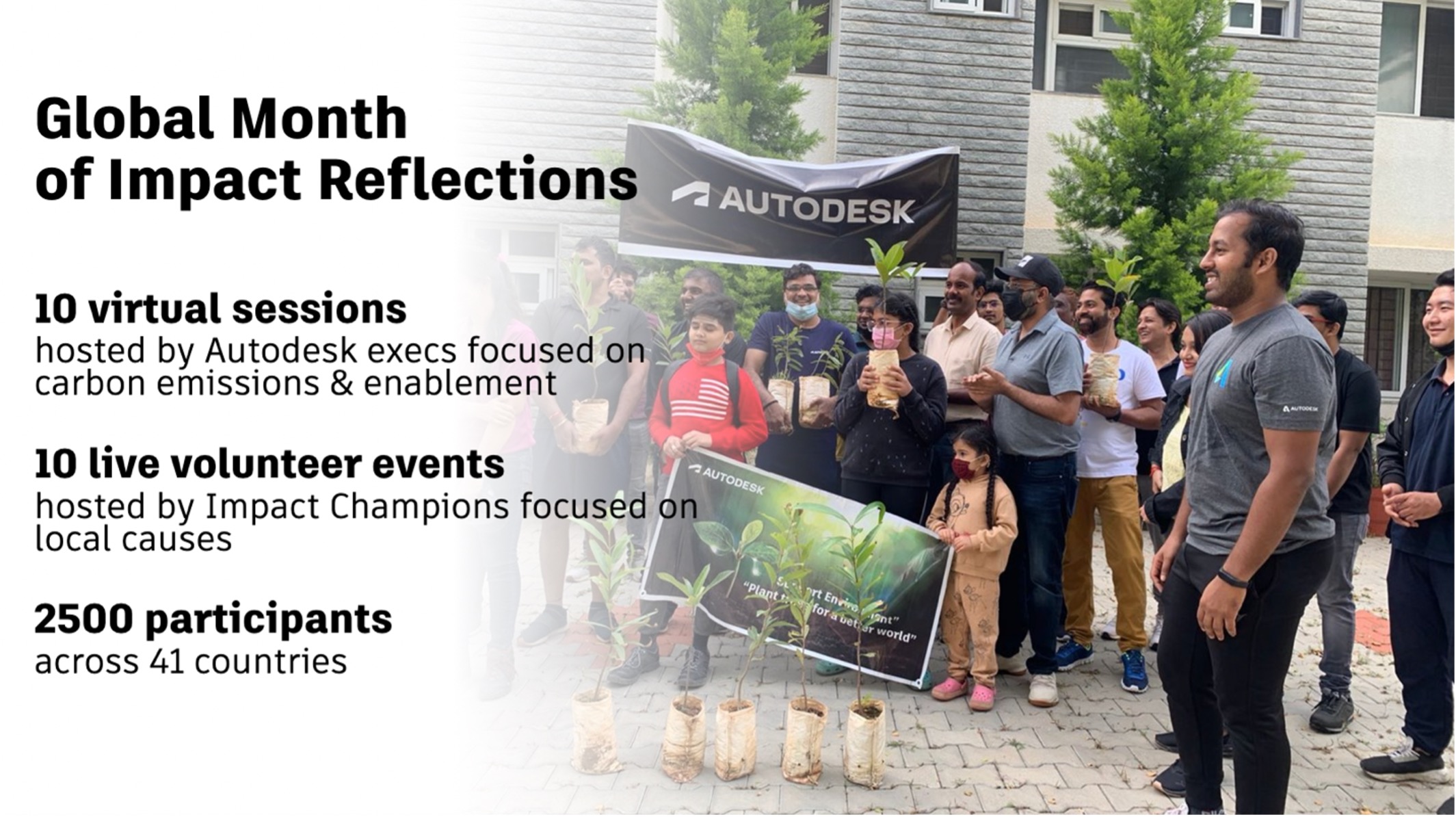
Why women are underrepresented in tech–and what to do about it.
July 28, 2022
Unscrambling Cybersecurity Acronyms: The ABCs of Endpoint Security
July 29, 2022That’s a wrap on Global Month of Impact 2022


Not many companies have the unique opportunity that Autodesk does to help reduce carbon emissions and make a better world globally. Sixty percent of annual global CO2 emissions[1] are associated with architecture, engineering, construction, and manufacturing. With 62 million professionals worldwide working in the industries we serve, the scale of Autodesk’s influence in the fight against carbon emissions has the potential to be profound.

Employees gathered virtually and in-person for Autodesk’s annual Global Month of Impact.
That’s why, for this year’s Global Month of Impact—our annual employee engagement campaign focused on impact—we shook things up. In pre-pandemic years, the campaign focused on bringing employees together for volunteer events during which they often made objects to benefit others such as 3D printed prosthetic hands, water filters, or solar lights. This year, however, the events doubled down on the real opportunities laid out in our new Impact Strategy.
The strategy has three pillars aimed at advancing sustainability through 1) our own operations, 2) partnering with our customers, and 3) advancing industry innovation. This year’s Global Month of Impact sessions focused on the first and second pillars.
During June, over 2,500 employees participated in ten virtual sessions. Each session included:
- an executive introduction
- an informative, interactive quiz about Autodesk’s carbon commitments
- a customer sustainability success story that showcased the impact of Autodesk tools on a buildings carbon footprint
- and an opportunity to calculate one’s own personal carbon footprint

Carbon Program Manager Rahul Barua explains carbon management at Autodesk during Global Month of Impact
The engagements led to ongoing conversations around carbon and carbon management on internal social channels. The experience will also be converted into a self-serve learning pathway available to all employees on-demand.
In addition, 10 in-person and local volunteer events were organized by local Impact Champions, in offices around the globe where employees felt comfortable getting together. We saw employees around the globe host recycling events, trash clean-up adventures, educational webinars, and local expert talks.

An in-person Global Month of Impact event was held in India this year.
Here at Autodesk, we believe that every employee can make a difference and we are working hard to build impact into every role. Global Month of Impact highlighted some of the ways that Autodesk is, in practice, an impact-driven company, committed to enabling our employees and customers to reach their sustainability goals. It also helped illuminate the opportunity we have to effect real change across the industries we serve.
[1] https://architecture2030.org/why-the-building-sector/; https://www.epa.gov/ghgemissions/sources-greenhouse-gas-emissions

